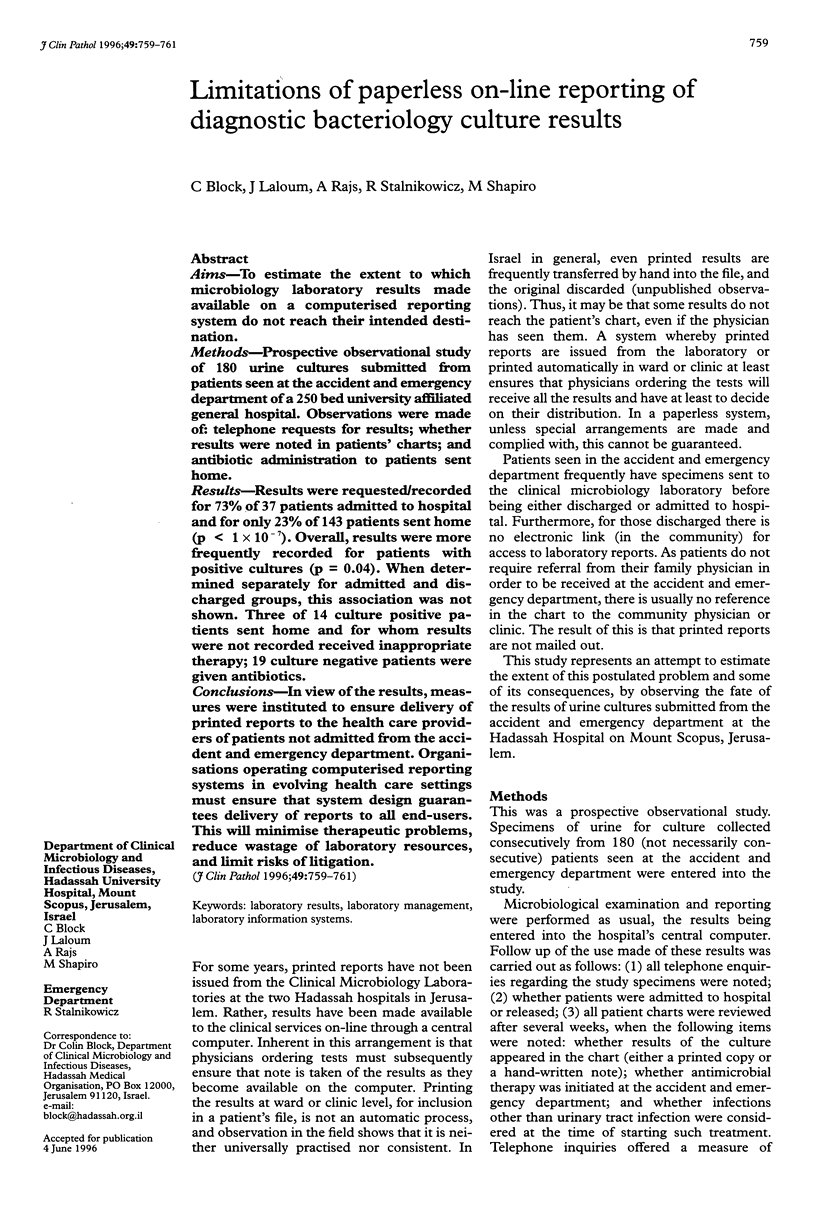Abstract
AIMS: To estimate the extent to which microbiology laboratory results made available on a computerised reporting system do not reach their intended destination. METHODS: Prospective observational study of 180 urine cultures submitted from patients seen at the accident and emergency department of a 250 bed university affiliated general hospital. Observations were made of: telephone requests for results; whether results were noted in patients' charts; and antibiotic administration to patients sent home. RESULTS: Results were requested/recorded for 73% of 37 patients admitted to hospital and for only 23% of 143 patients sent home (p < 1 x 10(-7)). Overall, results were more frequently recorded for patients with positive cultures (p = 0.04). When determined separately for admitted and discharged groups, this association was not shown. Three of 14 culture positive patients sent home and for whom results were not recorded received inappropriate therapy; 19 culture negative patients were given antibiotics. CONCLUSIONS: In view of the results, measures were instituted to ensure delivery of printed reports to the health care providers of patients not admitted from the accident and emergency department. Organisations operating computerised reporting systems in evolving health care settings must ensure that system design guarantees delivery of reports to all end-users. This will minimise therapeutic problems, reduce wastage of laboratory resources, and limit risks of litigation.
Full text
PDF


Selected References
These references are in PubMed. This may not be the complete list of references from this article.
- Ackerman V. P., Pritchard R. C., Obbink D. J., Bradbury R., Lee A. Consumer survey on microbiology reports. Lancet. 1979 Jan 27;1(8109):199–202. doi: 10.1016/s0140-6736(79)90593-2. [DOI] [PubMed] [Google Scholar]
- Barnes M. P. Influence of laboratory reports on prescribing of antimicrobials for urinary tract infection. J Clin Pathol. 1980 May;33(5):481–483. doi: 10.1136/jcp.33.5.481. [DOI] [PMC free article] [PubMed] [Google Scholar]
- Campo L., Mylotte J. M. Use of microbiology reports by physicians in prescribing antimicrobial agents. Am J Med Sci. 1988 Dec;296(6):392–398. doi: 10.1097/00000441-198812000-00005. [DOI] [PubMed] [Google Scholar]
- Edwards L. D., Levin S., Balagtas R., Lowe P., Landau W., Lepper M. H. Ordering patterns and utilization of bacteriologic culture reports. Arch Intern Med. 1973 Nov;132(5):678–682. [PubMed] [Google Scholar]
- Howanitz P. J., Walker K., Bachner P. Quantification of errors in laboratory reports. A quality improvement study of the College of American Pathologists' Q-Probes program. Arch Pathol Lab Med. 1992 Jul;116(7):694–700. [PubMed] [Google Scholar]
- Howe R. A., Bates C. J., Cowling P., Young N., Spencer R. C. Documentation of blood culture results. J Clin Pathol. 1995 Jul;48(7):667–669. doi: 10.1136/jcp.48.7.667. [DOI] [PMC free article] [PubMed] [Google Scholar]


